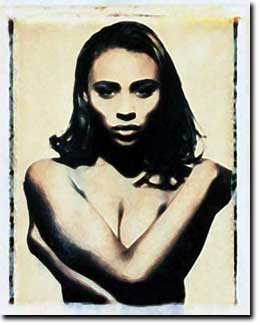Pavlina_______Women's Studies and Law & Society, Social Division
For Bibliography Click here

Critical Race Theory emerged in a response to feminist and civil rights movements around 1960s-1970s. It critiques traditional feminists who constructed "race" as one category, assumed women's experiences were universal, ignored the individual experiences of women, and did not look at the interconnection of racism and sexism.
For anti-racist feminists/activists the starting point was challenging racism instead of challenging patriarchy. This took place during the First Wave Feminist Movement between 1850-1970. First wave feminists, also, used the notion of pure race to justify colonial and eugenic practices. During the Second Wave, 1970-1990, there still was not much of a significant body of literature available to show how the concepts of gender and race are connected. However, the number of women of color in the academics, who continued to amplify/spread out the tradition of anti-racism, was increasing. When the Third Wave started, 1990 to present, there were more materials, which were being documented and analyzed to explain how racism works across the lives of women of color. For more info on racefem click here.

Some of the anti-racist feminists/activists include Sojourner Truth, who was a slave and the author of the phrase "Ain't I a woman"; bell hooks, author of Feminist Theory: from margin to center, "Postmodern Blackness"(1990), and Ain't I A Woman: black women and feminism; Audre Lorde, Sister Outsider: Essays and Speeches by Audre Lorde; Didi Khyatt, "The Boundaries of Identity at the Intersection of Race, Class and Gender"; Dionne Brand and more. However, I will focus my attention on one of these anti-racist feminists - bell hooks who is one of the most influential activists in the development of the anti-racist feminism. That is not to say that the other anti-racists feminists are less significant or that they have not contributed as much to the anti-racist discourse. bell hooks argues that the traditional feminist theory lacks wholeness and broad analysis because it has "emerged from privileged women who live at the center"(bell hooks, Feminist theory: from margin to center; 1984, ix) and thus lacks any knowledge and awareness of the lives of both women and men who live in the "margin". That is what inclined her to write one of her most famous books - Feminist theory: from margin to center - in which she criticizes and questions the hegemonic dominance, as she puts it, re-examines and explores new possibilities and directions of feminist theory. She criticizes the one-sided perspective of women's experience and reality presented by the traditional, liberal (link to libfem.html), feminists such as Betty Friedan. She, further, writes that traditional feminists have ignored the racial hierarchies and have made invisible the connection between race, class and gender. According to her, they have little or no understanding of the function of white supremacy as a "racial politic" and its effects. For further information on hook's theory/work click here.
Anti-racist discourse has concentrated more on media rather than technology. That is why I am going to talk about the relationship between gender, race and technology by including other factors, as well, that intertwine with this relationship. More specifically, I will discuss soap operas (link to Brown.html), how are women presented in it, and how does "race" and other factors fit into this.
Soap operas are the type of media which clearly, or at least in my opinion, show how whiteness is still used to play a neutral and supreme role, while the "other race" groups are used to fit the stereotypical labels they have been given in society. In other words, in most, if not all, of the soap operas there is a system of hierarchy which includes not only class but gender and race too, as well as sexuality (link to queerfem.html), ablism and so on. To get more info on anti-racism and media click here.